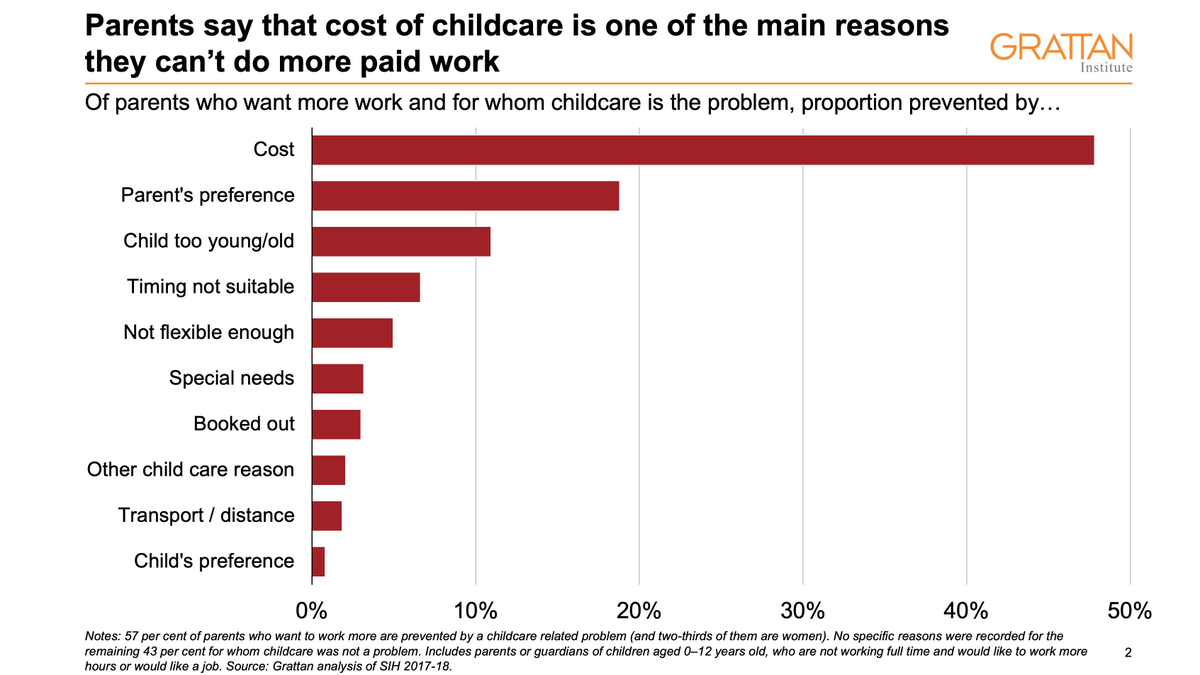1/ The National Disability Insurance Scheme has grown too big too fast, and its future is now at stake.
Costs must be reined in – and this can be done in a way that ensures disabled Australians can get the support they need.
Here’s how.
Costs must be reined in – and this can be done in a way that ensures disabled Australians can get the support they need.
Here’s how.

2/ The NDIS cost nearly $42 billion in 2023-24 and is expected to cost more than $58 billion by 2028.
It grew by about 24% a year on average from 2019-20 to 2023-24 and is now one of the biggest pressures on the federal budget.
It grew by about 24% a year on average from 2019-20 to 2023-24 and is now one of the biggest pressures on the federal budget.

3/ In 2011, the Productivity Commission estimated a mature NDIS would serve 490,000 people.
In fact, the scheme is now supporting more than 700,000 people and that number is projected to pass a million by 2034.
In fact, the scheme is now supporting more than 700,000 people and that number is projected to pass a million by 2034.

4/ The problem is, there’s often nowhere else for people with disability to get support.
And most disabled Australians don't qualify for the NDIS.
It’s all or nothing: you either get an NDIS package, or you get minimal services.
And most disabled Australians don't qualify for the NDIS.
It’s all or nothing: you either get an NDIS package, or you get minimal services.
5/ While the NDIS growth rate has started to moderate, a downturn in operational performance is very likely a contributing factor.
The NDIS is groaning under the weight of unsustainable work volumes, with assessment wait times being pushed out past guaranteed timeframes.
The NDIS is groaning under the weight of unsustainable work volumes, with assessment wait times being pushed out past guaranteed timeframes.

6/ Without further bold policy decisions, governments risk hitting the target but missing the point.
Here are four major policy changes that can help save the NDIS.
Here are four major policy changes that can help save the NDIS.
7/ First, the NDIS needs firmer boundaries so it is clear who the scheme is for and what needs it is intended to meet.
8/ Second, the way the NDIS manages claims needs to change so funding is allocated fairly and consistently.
People should have more choice and flexibility in how they use their NDIS funding.
People should have more choice and flexibility in how they use their NDIS funding.
9/ Third, governments should finally establish a strong tier of foundational supports to ensure disabled people get appropriate supports when and where they need them.
Under our plan, the existing NDIS budget would be used to fund foundational supports.
Under our plan, the existing NDIS budget would be used to fund foundational supports.

10/ And fourth, Australia needs a new National Disability Agreement, to clarify the relationship between all aspects of the disability policy landscape and to facilitate cooperation and greater accountability between governments. 

11/ Our blueprint would save billions while providing foundational supports within the existing budget.
The NDIS is vital. It must be saved. Our report by @samhbenn, Mia Jessurun, and @HannahOrban7 shows how. buff.ly/EFAAlkw
The NDIS is vital. It must be saved. Our report by @samhbenn, Mia Jessurun, and @HannahOrban7 shows how. buff.ly/EFAAlkw
• • •
Missing some Tweet in this thread? You can try to
force a refresh

















